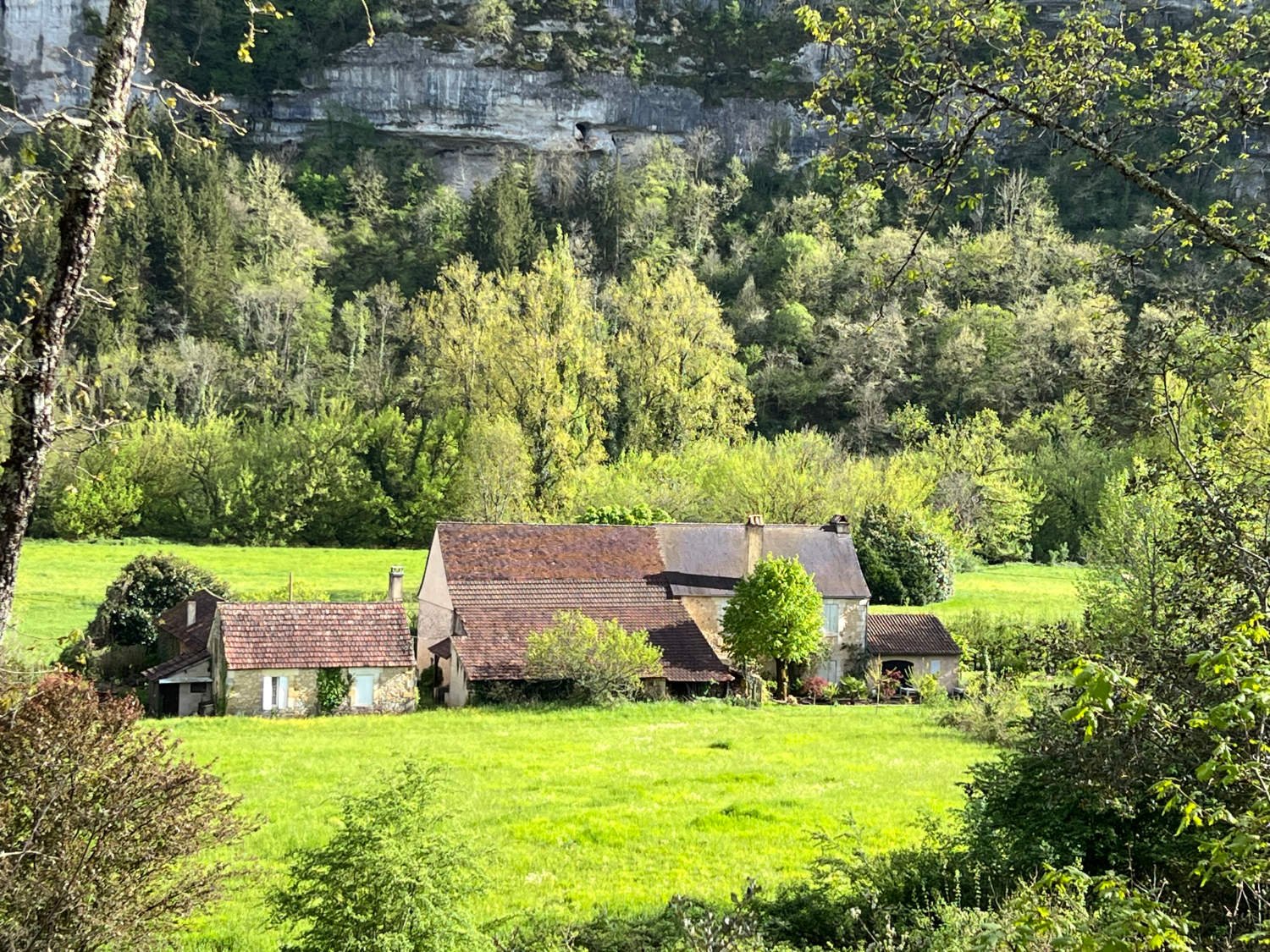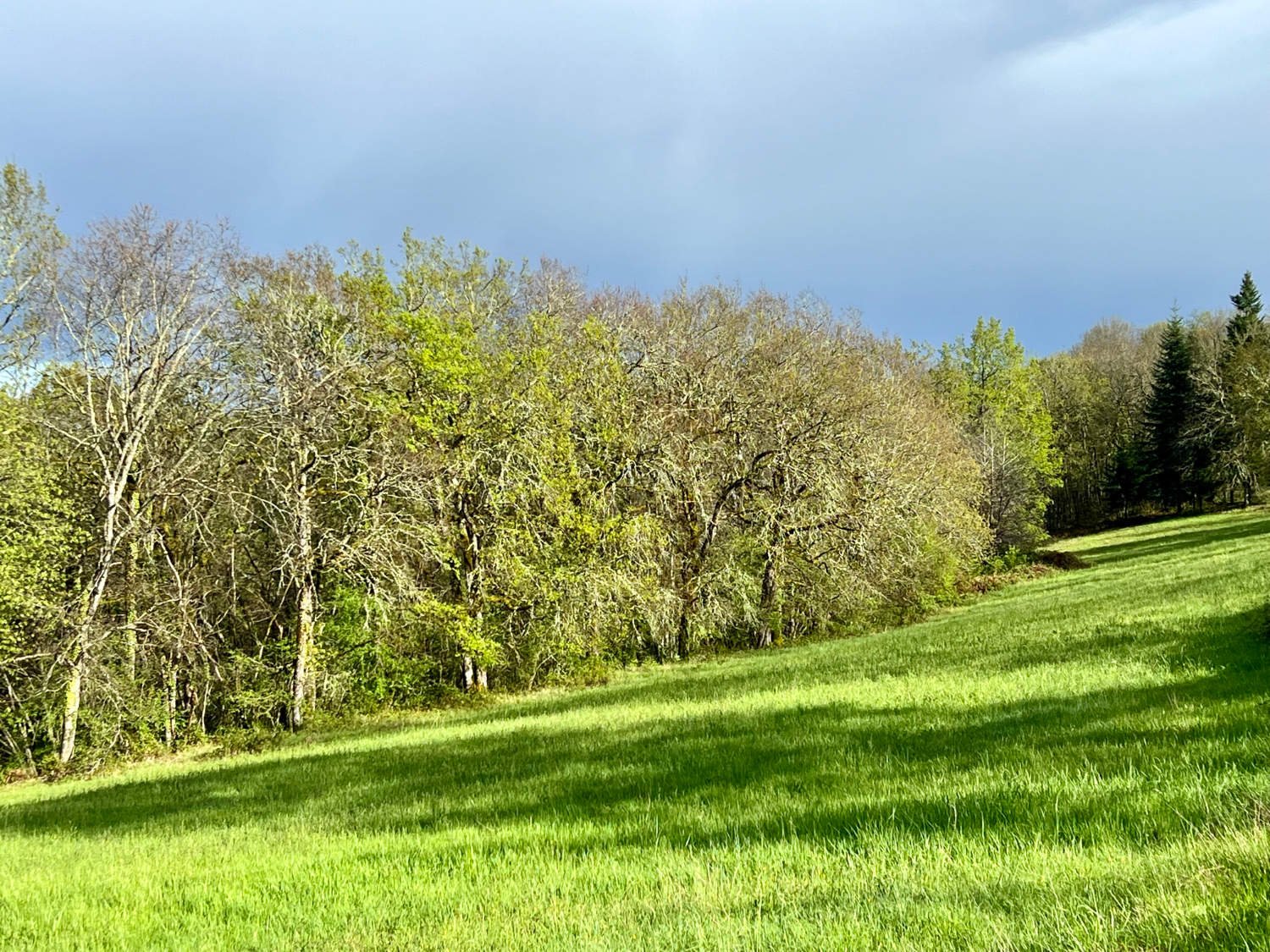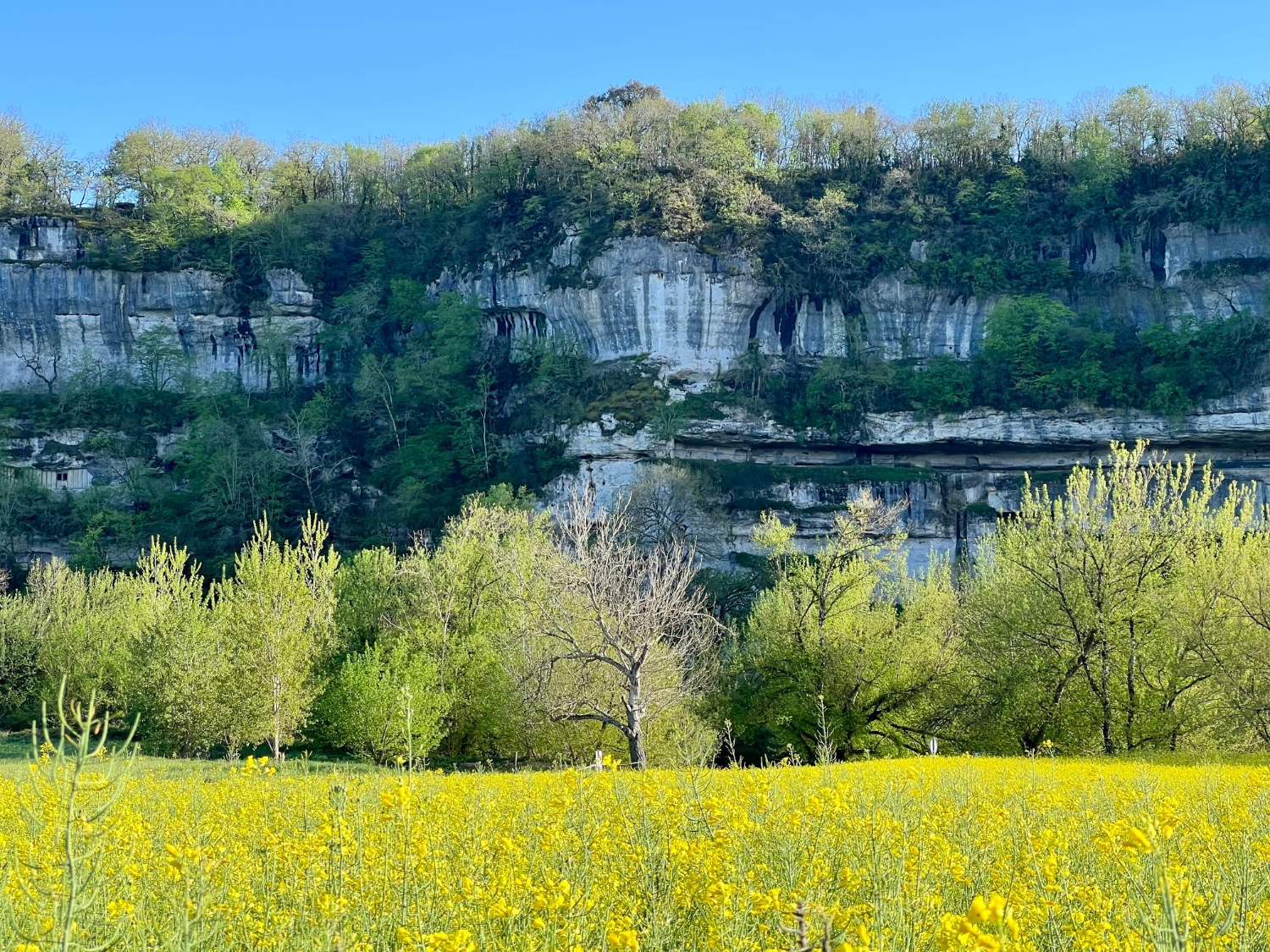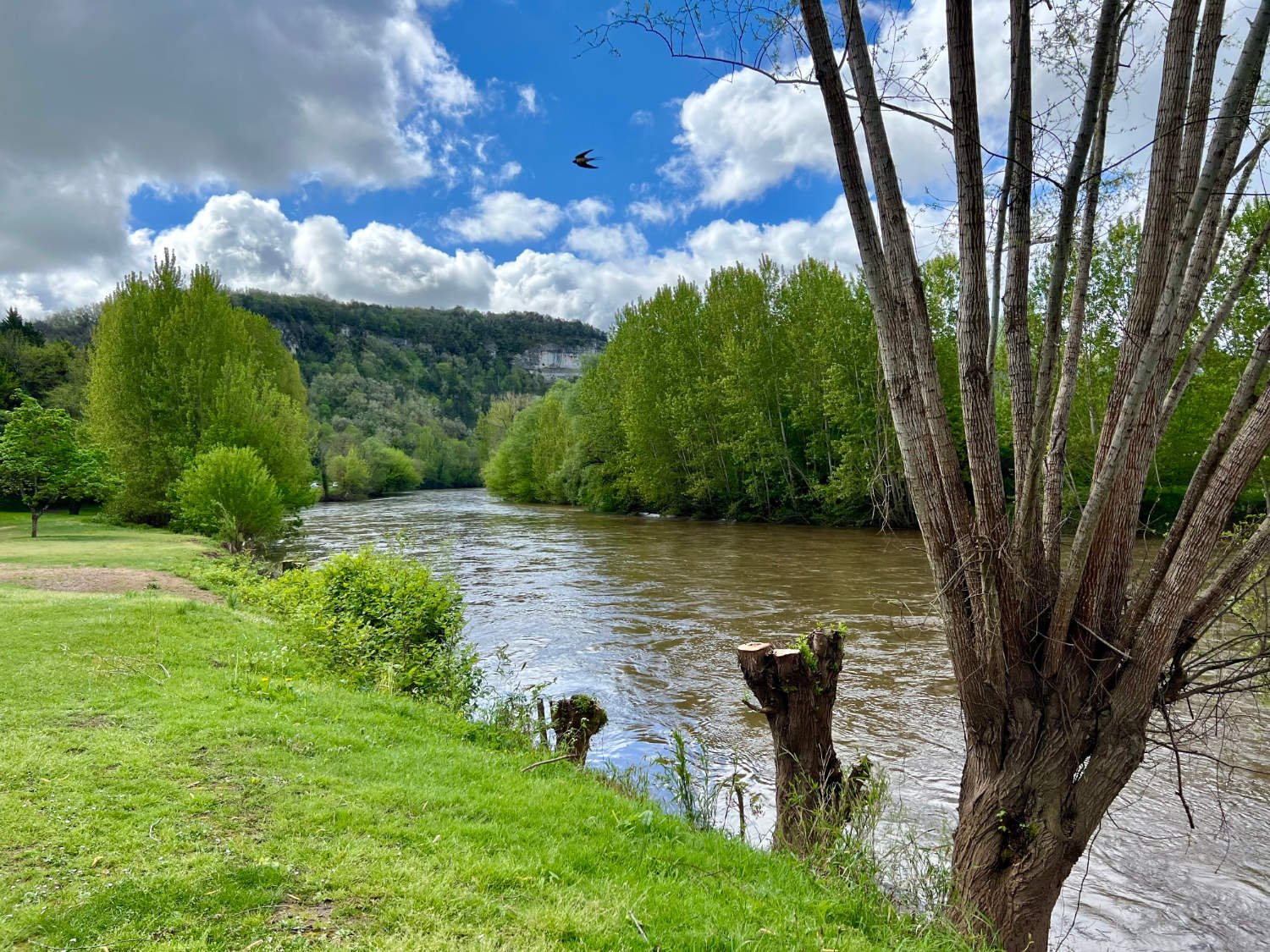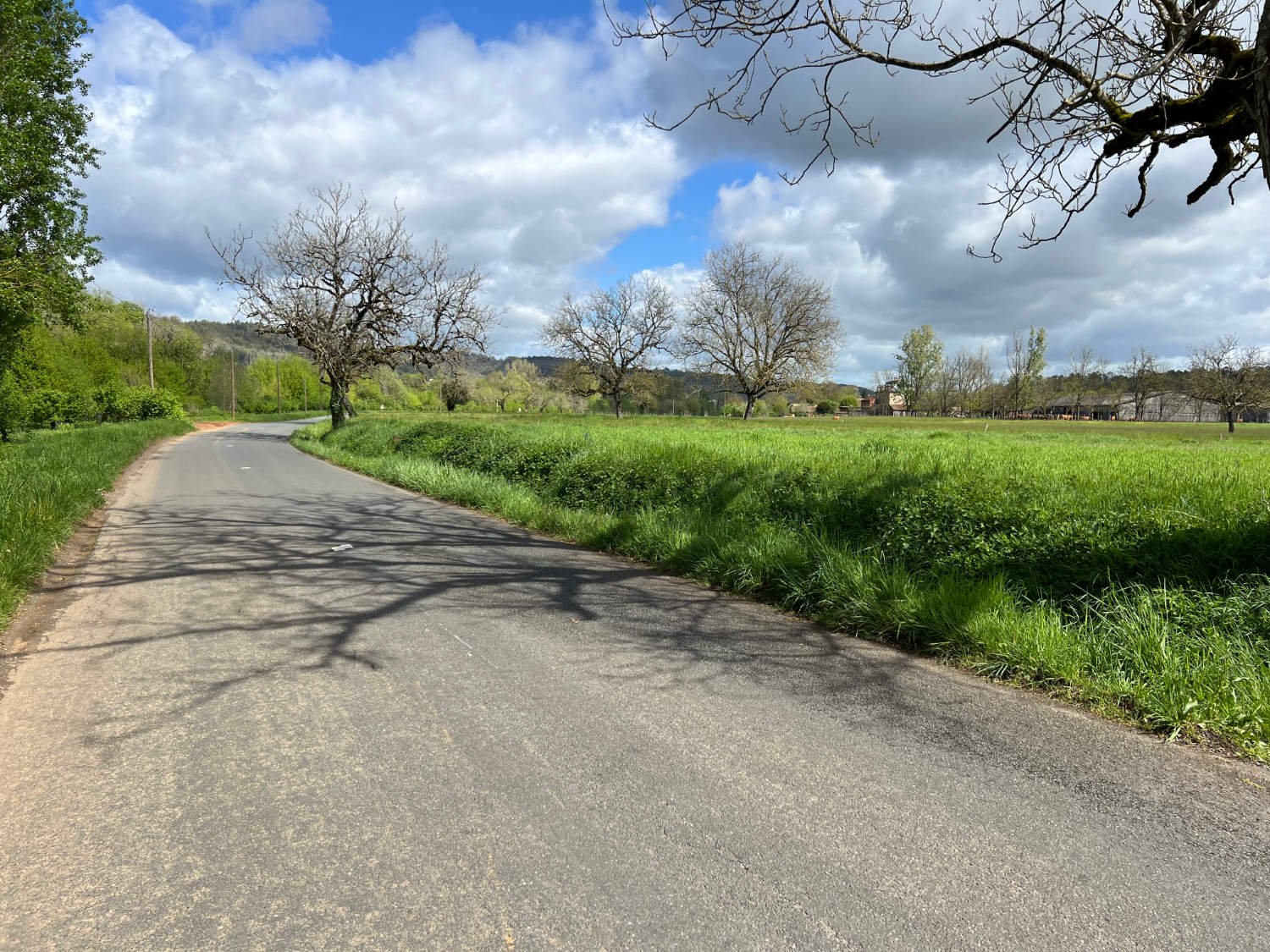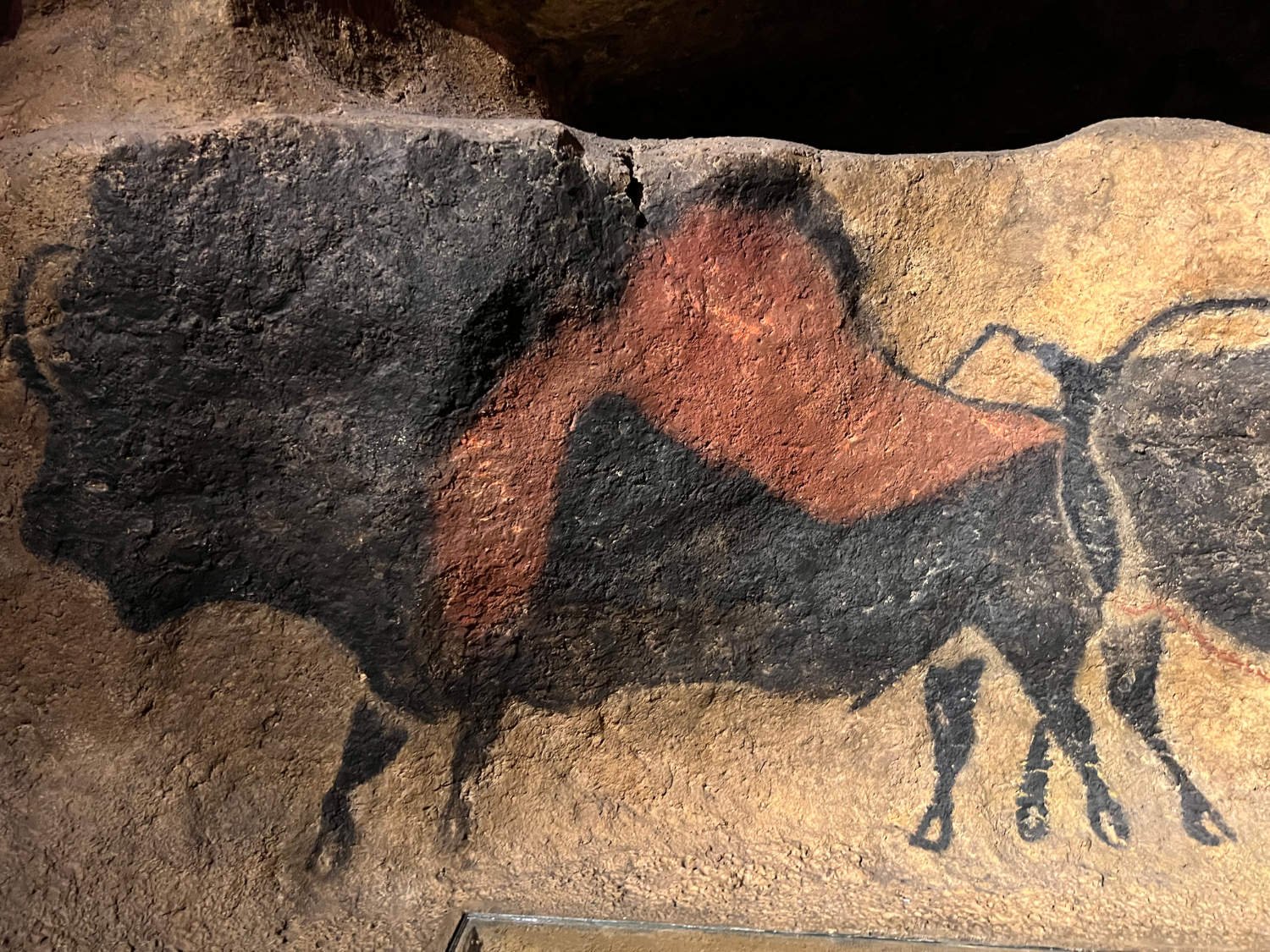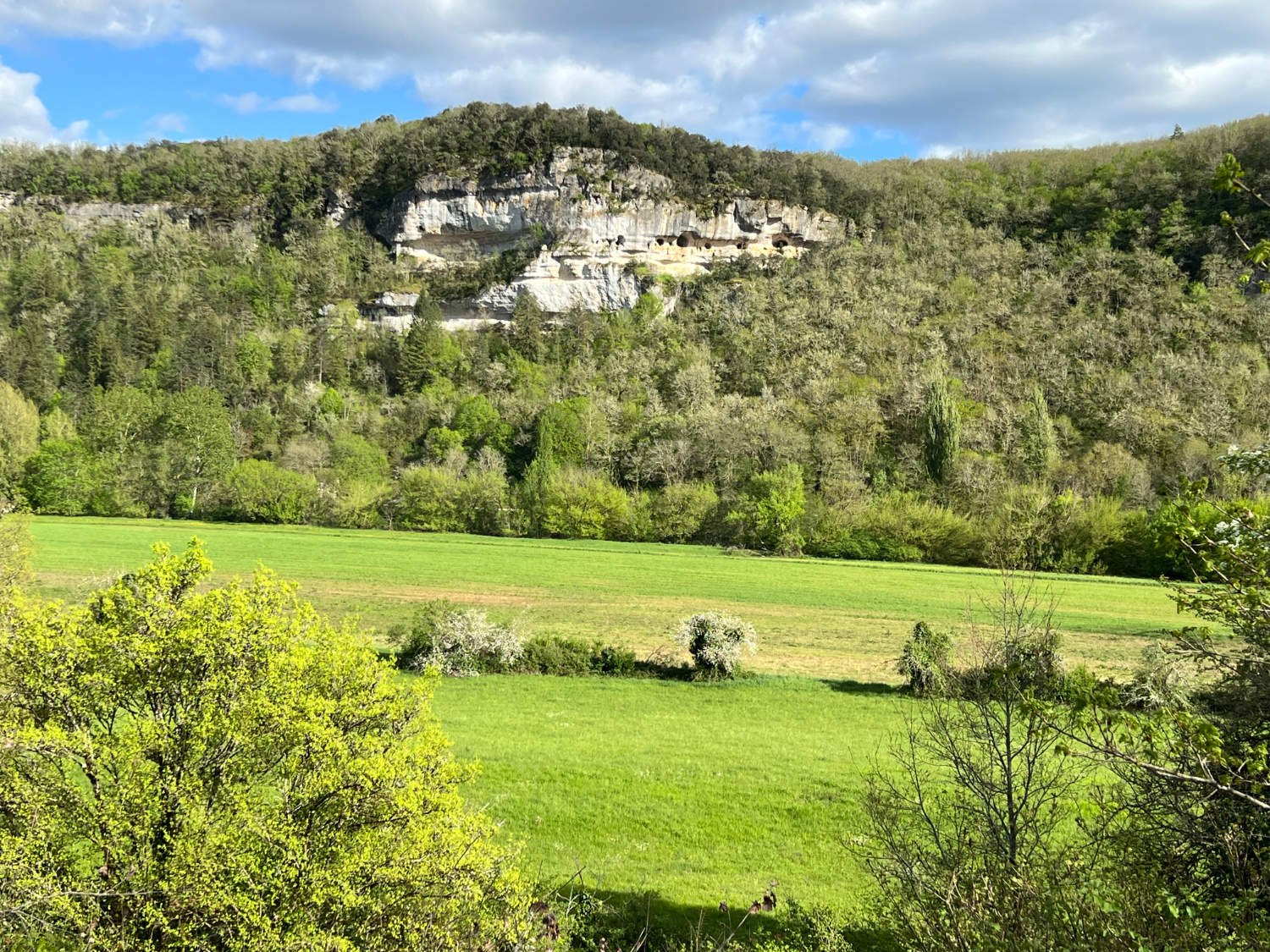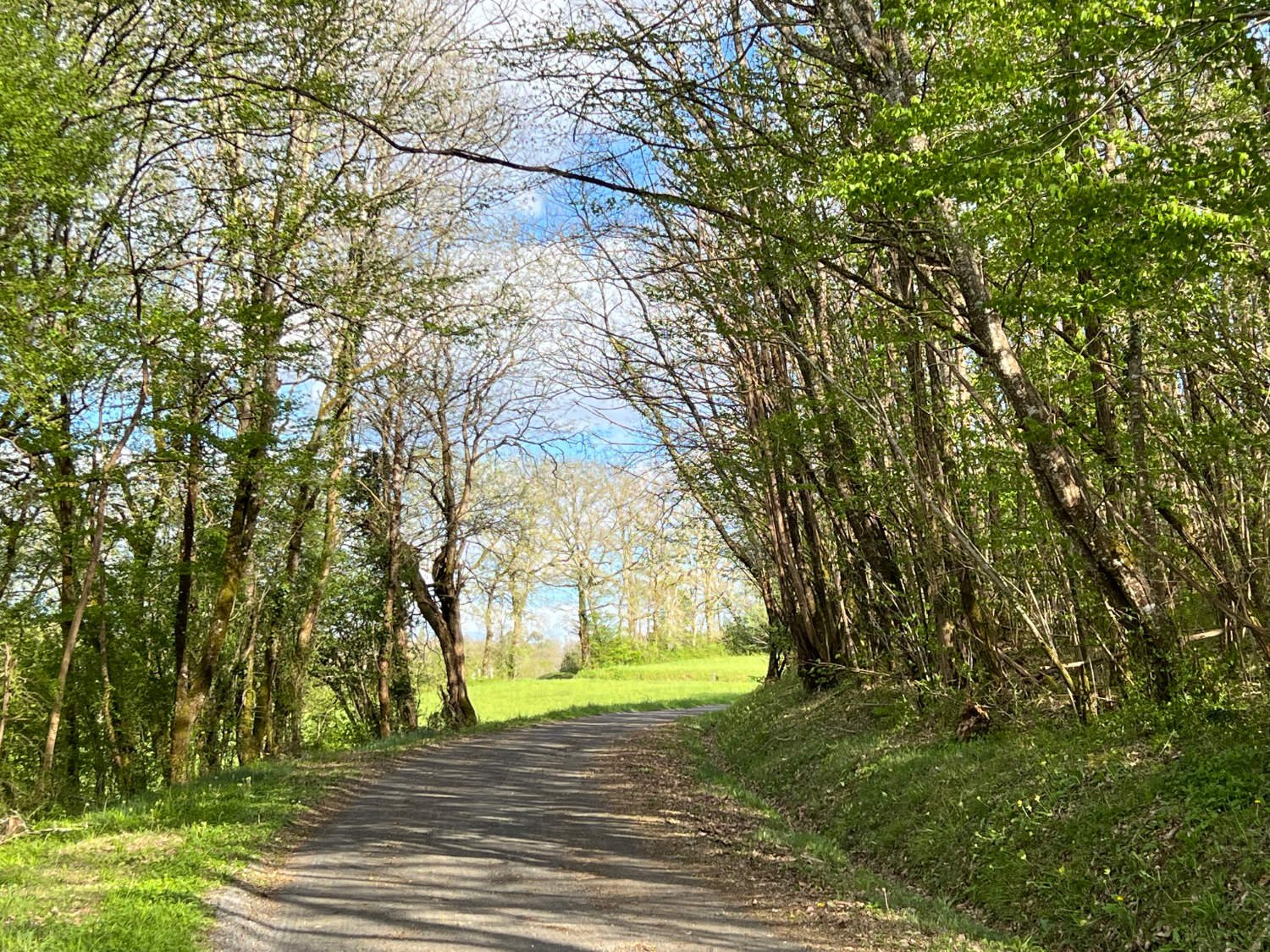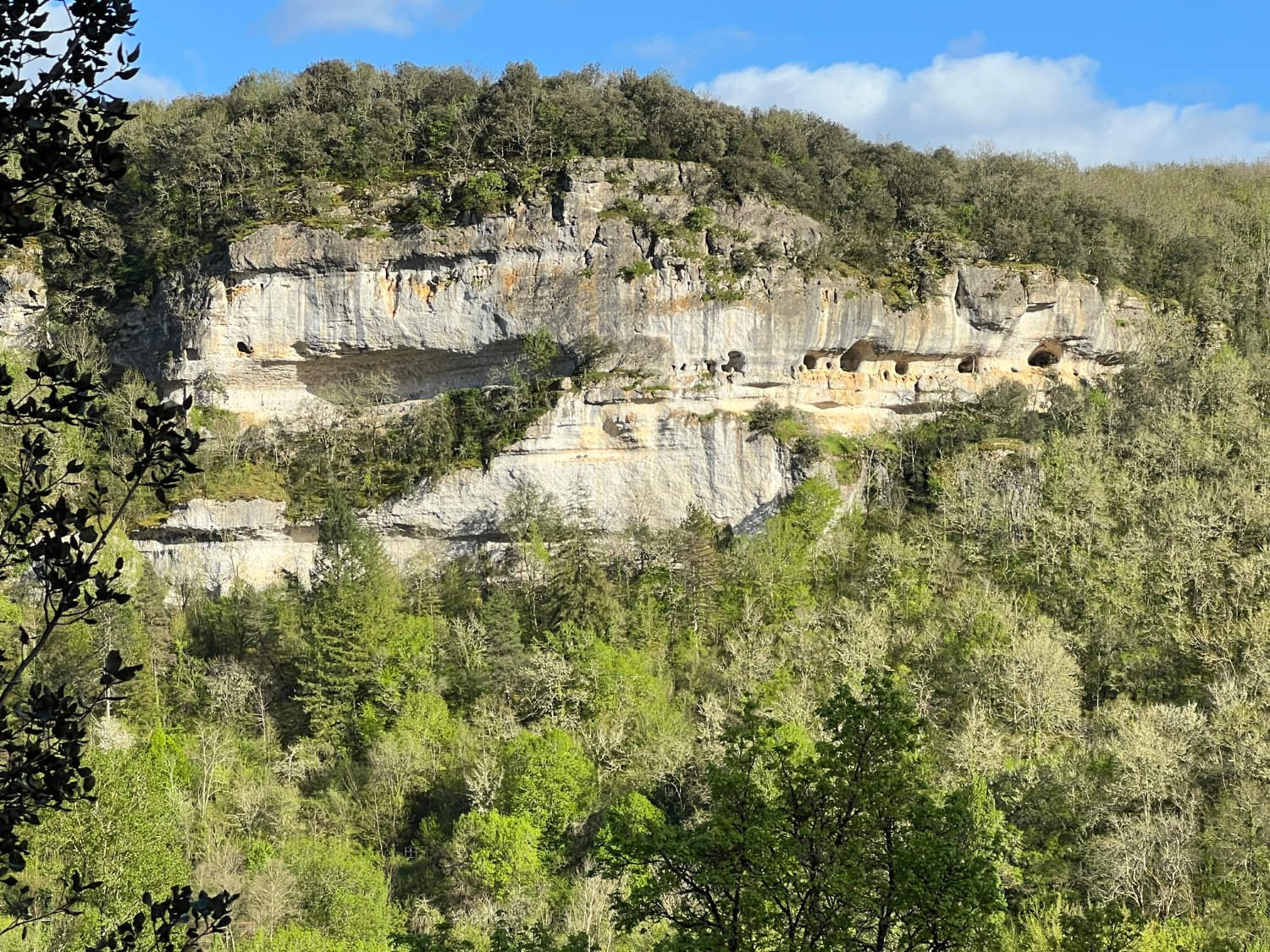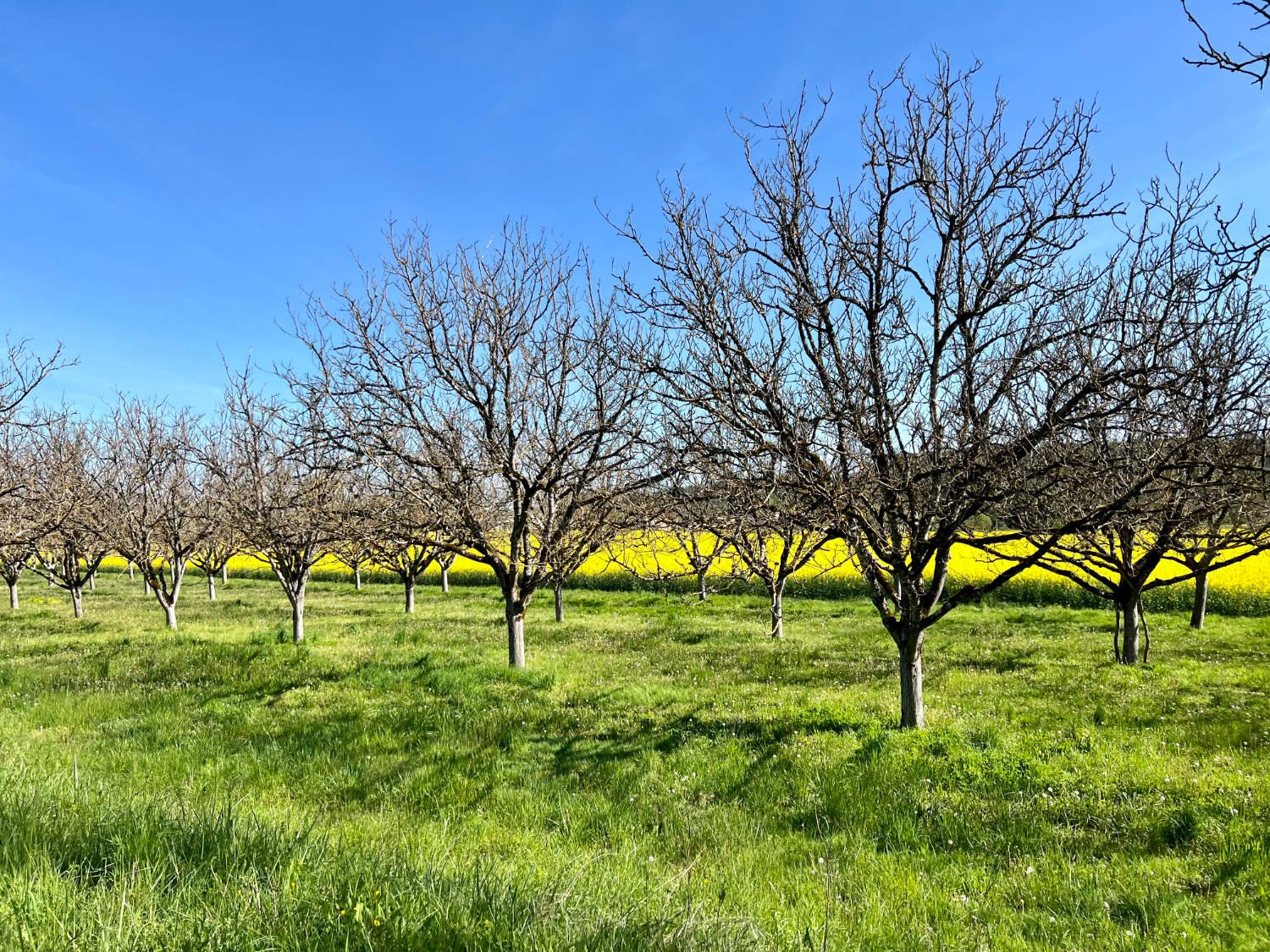A mammoth ride
Les Eyzies-en-Tayac
Be aware as you ride up a four kilometre hill built for non-existent traffic, through thick woodland of oak and chestnut whose banks are covered in cowslips and orchids, and onto a plateau created 85 million years ago, that you are on the lookout for mammoths. Several hundred of them. And keep your eyes peeled for the herds of bison, ibex, woolly rhinoceros, and reindeer. For whilst their presence is not immediately obvious, pedal quietly, for they are here. It’s just that, (to misuse a bike-racing expression), you’ll need to dig deep, even to bury yourself if you’re to see them eye-to-eye.
But before the mammoths, there are three things you need to get used to as you ride the route. Firstly, that time as you know it, is irrelevant. On this ride we talk in terms of tens of thousands or even millions of years. The second, despite this being a ‘valley’ route, there are many hills, some of them surprisingly long and the third is that the village names are rarely less than three words long - all hyphenated and barely pro-nouncable. To add to the challenge, the roadside signs are are upside down. The first village on the ride, Rouffignac-Sant-Cernin-de Reilhac, is a case in point. It sits high on a plateau and its name is, well, long.
But let that not trouble you, for you ride through it quickly before taking a single track lane across some fields and through more woods to an entry point into another world. Here, you swap the bike for a small electric train, which takes you nearly a kilometre into the cave system, passing old cave bear hibernation hollows as you do.
For ten minutes or so, the train descends slowly into the cave. Then it stops. Lights are turned out. A silence of anticipation hangs in the air.
The guide shines a dim light on the walls. Lines appear in the beam. Gradually the outline of two mammoths can be seen. They are deeply engraved in the wall of the rock. In a single confident sweep, the artist drew with a piece of bone, a detailed line - the jutting brow, the high-set head, the hump on the back, the curve of the rump. Other mammoths are illuminated, each as breathtaking in its artistry as the first. Woolly rhinocerous appear, three of them, and to the left a horse, the mane depicted brilliantly by a dozen scratches, while the lower jaw and neck consist of fifteen more expressive strokes. A single long line masterfully creates the nose.
It is breathtaking; not just because of the simplicity and purity of form for each of the 158 mammoths, 28 bison, 15 horses and 12 ibex grazing on Rouffignac’s cave walls, but because of their age. (16,000 years old). The works were painted in the weak light provided by a flickering flame fuelled by reindeer fat. Quite apart from the aesthetic quality, the details show the skill and talent of the artist(s) with the fall of fur, the line of a mane, the anal operculum on a mammoth (a small bone-like growth on the upper tail which pressed hard against the anus preventing chill winds from blowing up its bottom). He/She - they - knew what they were doing; each line is premeditated, and carefully considered after many hours of observation on the cold tundra plains. “It shows”, writes Marie-Odile Plassard author and expert on the Paleolithic age, “the modernity of these men.”
On the ‘Great Ceiling’, sixty-six animals are painted in manganese oxide - herds of ibex, mammoths and horses. Two, a horse and an ibex, are life-size. It would have been impossible for the artist to have seen with his weak light, the whole of his animal in one sweep of his eye. It adds yet another note to the great mystery - why were these paintings made when some could not even be seen in their entirety?
Later, back above ground and riding down a sharp hill, through picturesque villages of walnut-coloured stone into the Vézère valley, you find yourself asking, who were these people, what were their legends, did they fall in love, did they have language like ourselves, did they grieve, or create music? Did they laugh?
Lascaux has succummed to its fame. After only 18 years of limited public viewing the original cave was closed to the public and in 1983, Lascaux II was opened, an exact replica of the original. But this was too small to cope with the crowds, so in 2016, the huge complex of Lascaux IV was opened. Both have exact replicas of the original. The shape and style of Lascaux II creates a feeling that you are inside the actual cave. The guide takes you through with a lamp. It is an extraordinary place to be. Great friezes of animals cover the walls and roof. A horse is shown falling off a cliff, herds of aurochs walk across the walls, their bodies evenly weighted and rhythmic. The ceiling can only have been painted by someone lying on their backs upon a scaffold. Just as Michaelangelo did when painting the Sistine Chapel in Rome.
Impressive it certainly is, not least in the exactitude of the copy, but Lascaux is just that, a copy. Back on the bike, riding over several hills and dales, through groves of walnut trees, under white limestone cliffs, and for some heavenly time beside the pretty river, you arrive at La Grotte Font-de-Gaume.
Is it a case of the best till last? You will be the judge of that, as you walk once again deep inside the earth to confront herds of bison, over eighty of them and many other beasts besides. From a technical angle, the friezes are astonishing, not only in the minute accuracy of their form, but also with how the artist used the lines and folds of the caves to enhance particular features of the animals’ bodies. It is by any dimension spectacular art which would not be out of place in any twenty-first century gallery, but made more incredible by its veritable age.
It is a humble cyclist who remounts and rides the short distance back to Eyzies-en-Tabard, passing other caves, not least Les Combarelles, where there are more polychromatic paintings. In the village, the centre of French Prehistory, there is an excellent museum to put everything you’ve seen into some sort of context. There are rock shelters where the Magdalenian Peoples sheltered between their hunts and gatherings. There is your hotel, which is not a cave, and three fine restaurants.
As a bike ride in itself, it is testing and delightful, especially in spring before the Dordogne’s Great Summer Migration of Tourists begin. The roads are quiet, tickets for the caves are easily bought, there are no queues. You are even able to get a table in a restaurant without having booked months ahead. There is a monumentality and untouchable antiquity to the landscape, with its cliffs, deep valleys and extensive woods. But it is when you are not riding that makes this journey so special; there’s a sense of travelling into an unreachable world, one that is differently calibrated to ours, but still umbilically attached to this quotidian.

